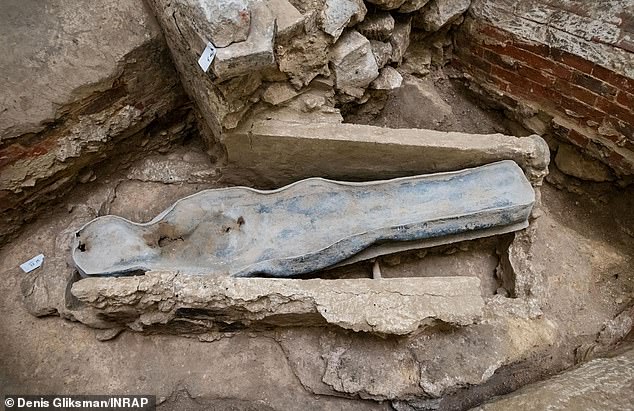Following the devastating fire at Notre Dame Cathedral in 2019, Paris authorities were left intrigued when they discovered two lead-lined coffins 20 metres below the church floor.
One skeleton was quickly identified as a local cleric born in the 17th century, but experts were stumped by the second, describing it simply as an “unknown nobleman.”
Now, they announce that it was the body of Joachim du Bellay, a famous French Renaissance poet and critic, born in Liré, western France, in 1522.
Nicknamed ‘the Horseman’ because of his fondness for horse riding, du Bellay died of chronic meningitis due to tuberculosis in 1560, at the age of just 37.
After his death, it was thought that his remains were buried at Notre Dame, but they were never identified, until now.
The coffin found beneath Notre Dame Cathedral after the devastating 2019 fire has been identified as belonging to 16th-century Frenchman Joachim du Bellay. Pictured is the previously “unknown” individual’s lead sarcophagus surrounded by 19th-century heating ducts
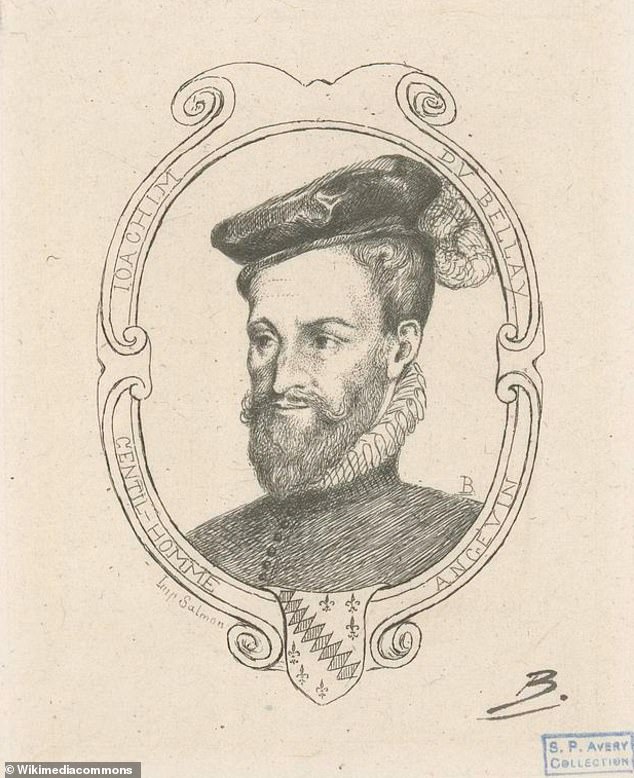
Joachim du Bellay (c. 1522 – 1 January 1560) was a poet, critic, and founder of La Pléiade, a group of 16th-century French Renaissance poets.
The new findings were revealed by the University of Toulouse III and the French National Institute for Preventive Archaeological Research (INRAP).
Dr. Éric Crubézy, professor of anthropology at the University of Toulouse III, stated that he died of “chronic tuberculous meningitis in the 16th century.”
“This age is rarely represented among the burials of important figures in the cathedral,” the professor added.
Following the fire at Notre Dame Cathedral in April 2019, two lead-lined coffins were found under the cobblestones where the “nave” and “transept” meet.
In a cross-shaped cathedral like Notre Dame, the nave and transept are the two straight parts that form right angles to each other.
The coffins were first discovered in March 2022, but the opening of the tombs did not occur until eight months later, that November.
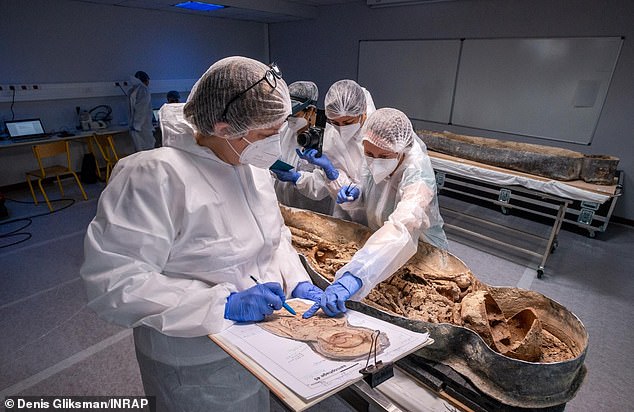
Forensic experts have been able to link such physical evidence of his remains to the life and death of Joachim du Bellay, as detailed in the literature.
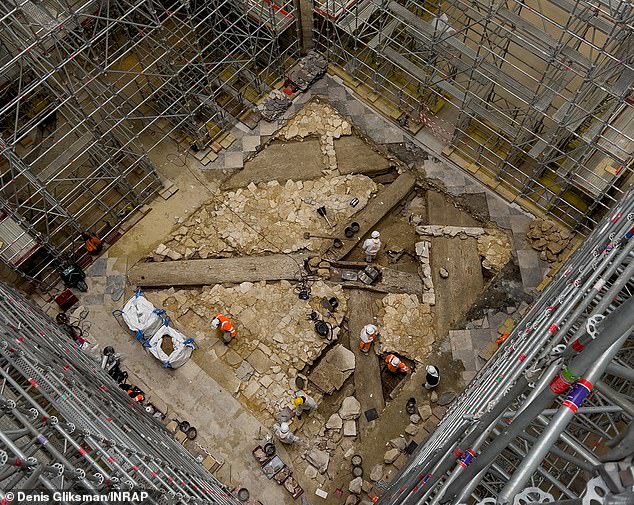
Following the fire at Notre Dame Cathedral in April 2019, two coffins were found under the cobblestones at a place where the “nave” and “transept” meet.
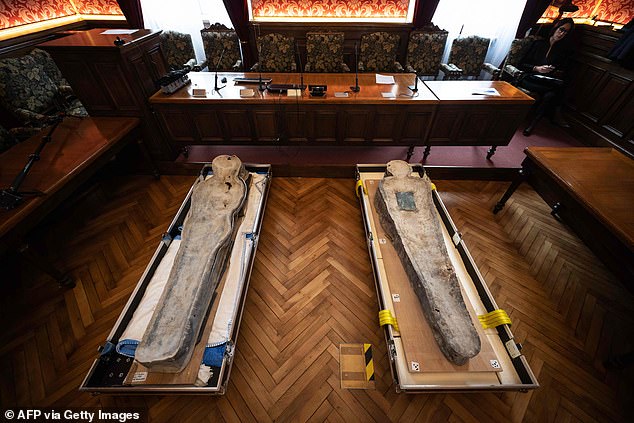
The two are shown together in the picture. The “unknown nobleman” (now known to be Joachim du Bellay) is on the left and the cleric on the right.
Although burials in cathedrals were practiced during the medieval and early modern periods, burial in a lead coffin was special (an act “reserved for an elite”) and was considered to be once wealthy men.
One of the coffins was identified as containing Antoine de la Porte, a cathedral cleric who died in 1710 at the age of 87, largely thanks to a nameplate bearing his name on the coffin.
Born in 1627, Antoine de la Porte provided financial support for the remodelling of the choir enclosure of Notre Dame in fulfilment of the vow of Louis XIII.
Although no organic tissue remained on the bones, the remains were well preserved, including his hair and beard.
However, the other lead coffin unearthed during the excavation remained “anonymous for the time being” due to the lack of a nameplate.
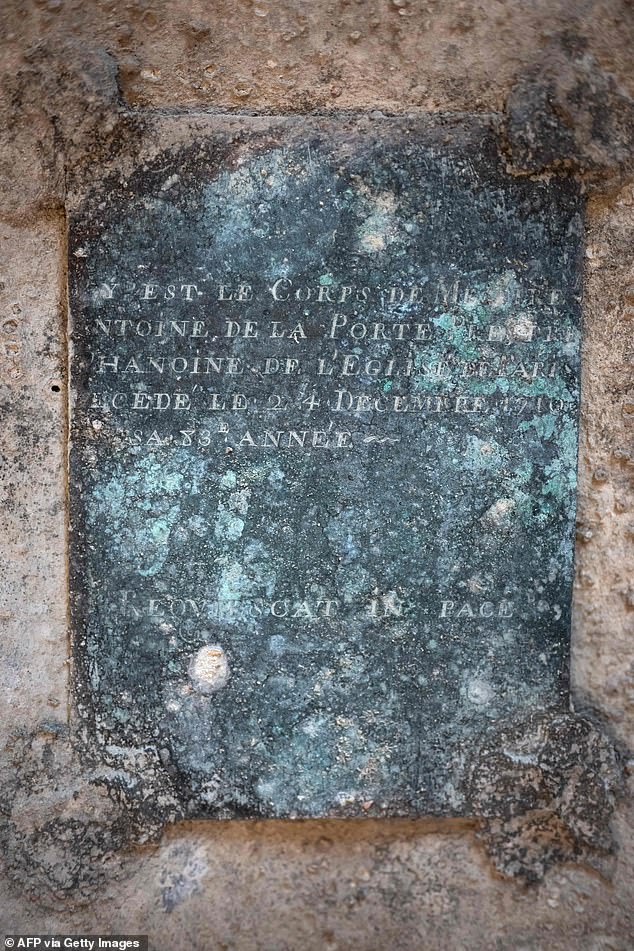
This bronze plaque on the priest’s coffin reads: ‘This is the body of MESSIRE ANTOINE DEL CANON PORTE DE LA IGLESIA (word erased) DIED ON 24 DECEMBER 1710 AGED 83. RESQUIETCAT IN PACE’
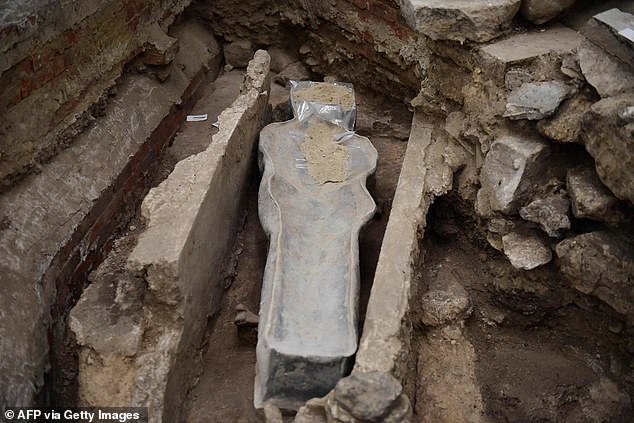
The lead sarcophagi were discovered during the reconstruction of the cathedral. They were buried more than 20 metres below the floor of the church.
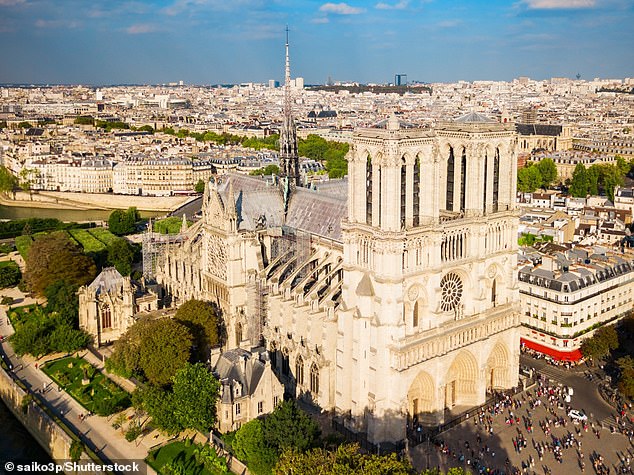
Notre Dame Cathedral was built in the shape of a Latin cross. Construction began in 1163 and the cathedral was almost finished by 1345.
Examination of the bones revealed that he was between 25 and 40 years old at his death and that he spent much of his youth riding horses, giving him the nickname “le Cavalier” (the horseman).
On its upper limbs several marks associated with horse riding can be seen.
Forensic experts have been able to link such physical evidence of his remains to the life and death of Joachim du Bellay, as detailed in the literature.
Traces of bone tuberculosis and chronic meningitis were found on the skeleton, symptoms of which the poet presented in the last years of his life.
“It meets all the criteria of the portrait,” Dr. Crubézy said at a press conference last week, as quoted by The Cross and Living science.
‘He is an accomplished horseman, suffering from both conditions mentioned in some of his poems, such as in ‘The Complaint of the Desperate’.
‘He describes “this storm that clouds (his) mind” and his family belonged to the royal court and the Pope’s close circle.’
However, Christophe Besnier, an INRAP archaeologist in charge of the excavations, suggests that some doubts remain.
“There are certain elements that do not support this hypothesis,” Besnier said.
‘Isotopic analysis of the teeth indicates that the individual lived in the Paris region or in Rhône-Alpes until the age of 10.
«However, we know that Joachim du Bellay grew up in Anjou.»
It is believed that without the cathedral fire five years ago the sarcophagi would remain undiscovered.
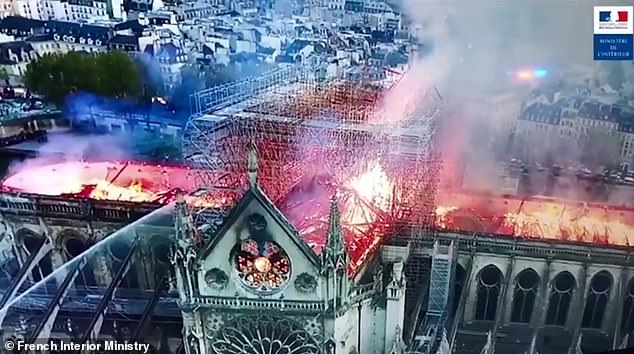
Drone footage from the French Interior Ministry showed the devastation of the cathedral’s centuries-old wooden roof.
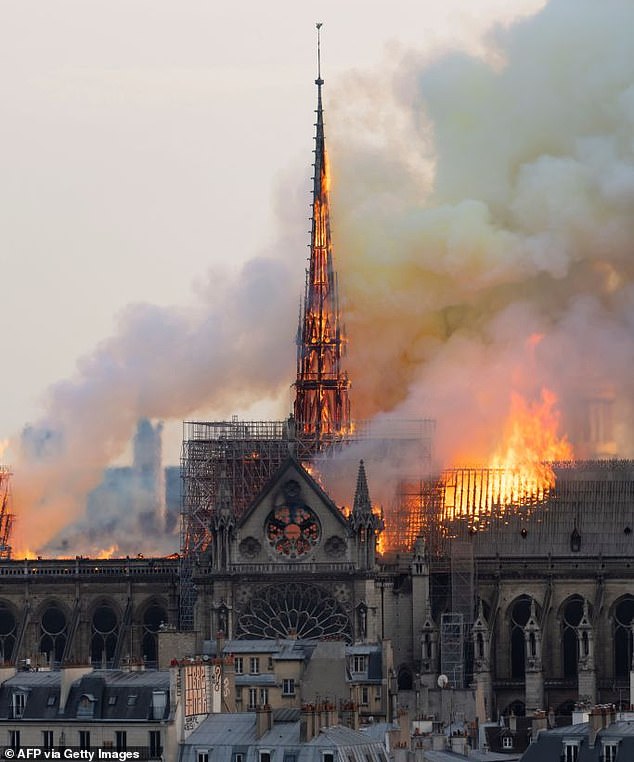
On April 15, 2019, millions of people around the world watched in horror as firefighters battled through the night to save the cathedral as a fire tore through its roof and brought down its bell tower.
On April 15, 2019, millions of people around the world watched in horror as firefighters battled through the night to save the cathedral as a blaze tore through its roof and brought down its bell tower.
The 300-foot-high Gothic tower collapsed into the embers at the start of the fire, amid cries of pain from locals paralyzed by the scene unfolding.
One of Europe’s most visited landmarks, the fierce fire broke out shortly before 7pm local time in an area of the roof that was undergoing renovations.
“Notre Dame survived all the wars, all the bombings. We never thought it could burn. I feel incredibly sad and empty,” said Stéphane Seigneurie, a consultant who joined other shocked spectators in a solemn rendition of “Ave Maria” as they watched the blaze from a nearby bridge.
Firefighters worked valiantly to stop the flames and French authorities said the sacred building was “between 15 and 30 minutes” away from being completely destroyed.
In September 2021, the French government announced that the cathedral was finally stable and safe enough to begin work on its reconstruction.
Following restoration work largely funded by €840m (£700m) from donors, Notre Dame Cathedral is set to reopen on 8 December this year.


